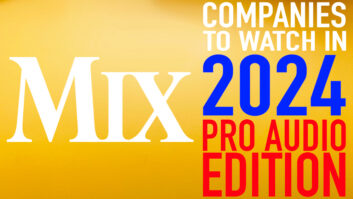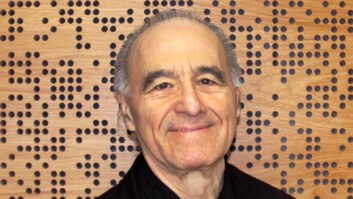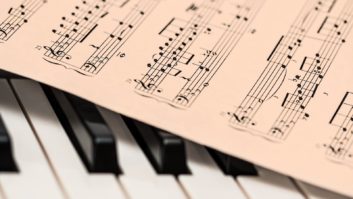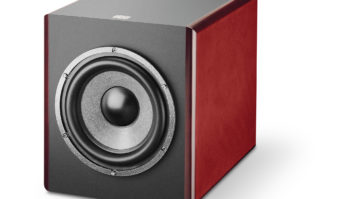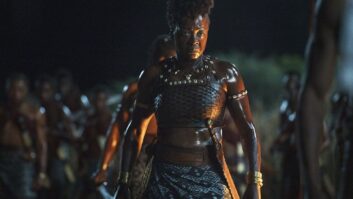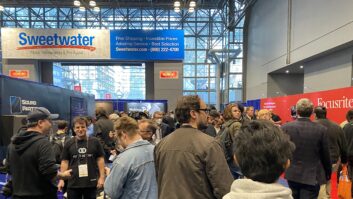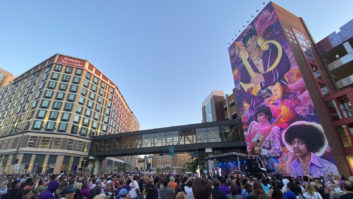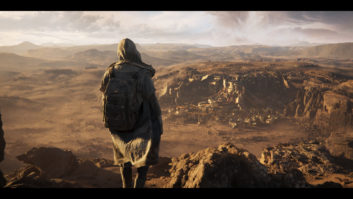No corner of the music industry calls for a blend of composing chops, speed and production skills more than episodic television. Often working with only a few days to score a half- or even a full-hour show that will be seen and heard by millions of viewers, today’s most successful television composers operate under intense pressure. They must create something unique, they must develop signature themes, and they must add weekly variance. And it’s usually not their only gig.
Mix recently spoke with three musicians who are turning in stellar tracks day in and day out. We wanted to know how they deal with the pressures — time-related and otherwise — that go with the job. What techniques help them turn out music that leaves them satisfied artistically and stays in bounds with the writers, producers and network executives they must also please? And what technologies help them in their creative endeavors? Our panel includes Rick Marvin (Six Feet Under), Michael Giacchino (Alias) and Danny Pelfrey (Spin City).
Longtime L.A. session ace/keyboardist Richard Marvin spent lots of time in the studio with Mike Post, starting with Hill Street Blues and progressing through a passel of hits, including Hunter, A-Team, Magnum P.I. and LA Law. He scored the recent film U-571, and now he writes weekly (Thomas Newman wrote the theme) for the new Emmy-winning dark comedy Six Feet Under.
Michael Giacchino’s work scoring PlayStation video games ultimately brought him the plum assignment of Alias. Writing full orchestral scores and producing sessions first for The Lost World and then for several other DreamWorks Studios games, Giacchino’s success prompted Steven Spielberg to recommend him to the Gorfaine Schwartz Agency, which helped him land the one-hour weekly series.
Writing from the heart hasn’t hurt Danny Pelfrey. A dozen years ago, he penned a piano piece for his wife. The emotions that he tapped were picked up by the fans of Felicity, when the prime-time show’s producers first used it as background music during its second season. They have been replaying it regularly ever since. Now known as “Felicity and Ben’s Theme,” this music can be found on Pelfrey’s Website, www.dannypelfrey.com, under Piano and String Quartet (samples 11 and 14).
When the shows you score are in production, how much time do you have to compose and produce the music that’s needed? How many minutes do you have to churn it out?
Rick Marvin: I generally have about a week to turn out a score. Compared with some other shows, Six Feet Under doesn’t use a whole lot of music, generally about 10 minutes per episode. And remember, we only turn out 13 shows a season for HBO, not the 26 or so that the networks can ask for.
Michael Giacchino: I don’t know exactly how much, but Alias uses a lot of music. Half of my work is loop-based, with lots of percussion, and the other half is live orchestral material. It’s a nice balance. I get about three days to compose and produce the score.
Danny Pelfrey:Spin City is a half-hour comedy that will have a bunch of cues, maybe three to four minutes’ worth per show. I find that I tend to take as much time as I have to score a show. If I have a week, I use it; if I have to turn something out in a day, I will. Initially, you’re designing a sound palette for a show. Once I’ve got that done, the actual amount of minutes that’s required isn’t that critical.
Do you have weekly spotting sessions with your producers?
Pelfrey: Not on Spin City. It’s pretty obvious what kind of music is called for. However, I always spot the dramatic television shows — like the CBS show That’s Life that I’m currently working on — especially the ones that are an hour long.
Giacchino: I have weekly spotting sessions with J.J. Abrams. He’s the creator of the show and a fantastically talented guy. J.J. wrote Regarding Henry and Armageddon. He heard about me through one of the show’s producers, someone who’s a huge video fan. J.J. contacted me out of the blue. We met and became really good friends.
We’re far enough into the season that the picture editor will generally temp a show with the previous episode’s music, which is most often not quite right but it gives a sense of the mood. We usually go quickly through each scene, with J.J. giving me verbal descriptions of what he’d like the music to add. These sessions happen every Thursday, and I have until Sunday to create the score.
Marvin: We do spot the shows. I work with Alan Ball, the creator, producer and writer, and producer Alan Poul. These are fabulous guys who are a joy to work with.
The Number One thing that makes the show special is the fact that it’s so well-written. It’s a really good job for a composer, because they don’t want anything that’s obvious, and, in particular, they want me to make sure that the music doesn’t sentimentalize the show. That frees me to come up with unexpected ideas.
We’re now on the fifth show of the second season and have developed a vocabulary together. Alan and Alan will usually come to my studio, where all of the music is created, a day or two before the dub and hear the cues I’ve developed. If something doesn’t work for them, we’ll make alterations on the spot.
Who does your tracking and mixing? How much do you rely on automation?
Giacchino: Although I definitely don’t consider myself an engineer, I often end up creating the stems myself. I have two Mackie D8Bs in my home studio, Edgewater Park Music, along with a pair of Mackie HDR 24 digital recorders.
I’ll take one of the HDR 24s over to Stage M at Paramount Studios, or Capitol Records, to record the orchestra. Dan Wallin tracks all the live sessions for me. Then I bring that material — up to 24 tracks wide — and lay it out on one D8B. The second console handles all my synths and samplers.
Since time is so limited, I had Steve Smith, who occasionally mixes for me, set up my studio in a way that lets me get the best possible mixes. Steve mixed all the game stuff I did for DreamWorks in Seattle. Basically, he helped me set up automation templates on the D8Bs for both the orchestral and synth setups, and I rely on these templates a lot, tweaking as needed. I use the same channels and settings for all of my synths, all the time. I couldn’t turn out the amount of music that’s required without the automation of the D8Bs and Steve’s initial setup work.
Marvin: I mix everything myself. I have a pair of [Yamaha] 02Rs, and I’ve created automation templates for Six Feet Under on both of them. I rely a lot on the dedicated GigaStudio computer that Craig Segal [Zipper Technologies, Tucson, Ariz.] built for me, and I’ve got templates for that as well. Eventually, I’ll get to the point where I mix on software exclusively, but the technology is not quite to the point where I can trust it not to crash or cause latency problems. I’m now starting to mix within Digital Performer, though.
By the way, I scored Brian’s Song, a TV movie, last fall, and I took my G4 over to Signet Sound to record 12 or 15 orchestral tracks against a stereo dump of synth material. I recorded this material through a MOTU 1296, which works flawlessly and sounds great. I also have a MOTU 828 FireWire box that I use with my Titanium PowerBook.
Pelfrey: My studio has three Panasonic DA-7s. These boards are made to gang together in pairs, so I use the third as a submixer. The DA-7s sound great, but the automation package is limited, so we don’t use it at all. Instead, Greg Townly, my engineer, and I use Digital Performer’s automation more than we otherwise might. Greg, who just finished working on Black Hawk Down with Hans Zimmer, is a great engineer. He likes to move faders!
I’ve worked with DP since its earliest possible version, [Version] 5 I think it was, and I use it as an instrument. I have a Kurzweil K2500 controller, and I input automation and panning information as I’m playing in parts, for the most part. Then I’ll tweak on DP’s software mixer, or with its graphic editor.
None of you has mentioned Pro Tools so far. What format do you use to deliver the stems you create?
Giacchino: I do own Pro Tools, and I take the stems from the HDR 24s and create Pro Tools files for the sound stage using it. My wish list includes Mackie coming up with software that lets me output my files directly from the HDR 24s in a format that Pro Tools can read.
Pelfrey: We record everything into Digital Performer. At the end of a session, we carefully label all of the sound bites created in DP and output them as SDII files. We give the editor a log that tells him the SMPTE start times of all of the cues, and he assembles Pro Tools sessions. The process works flawlessly.
Marvin: I do the same thing, tracking to DP and outputting SDII files. More and more, I see the entire process heading inside the computer. I used to have racks of synths and samplers. Now I’m using Native Instruments plug-ins, and I just got Reason, which is incredible. The whole idea of a modular studio that you sync up to your digital sequencer with ReWire is fantastic.
Everything we’re doing on Six Feet Under is in stereo, not surround. Once in a while, I’ll isolate elements from a cue to give the editor control over them in a mix, but not all the time.
